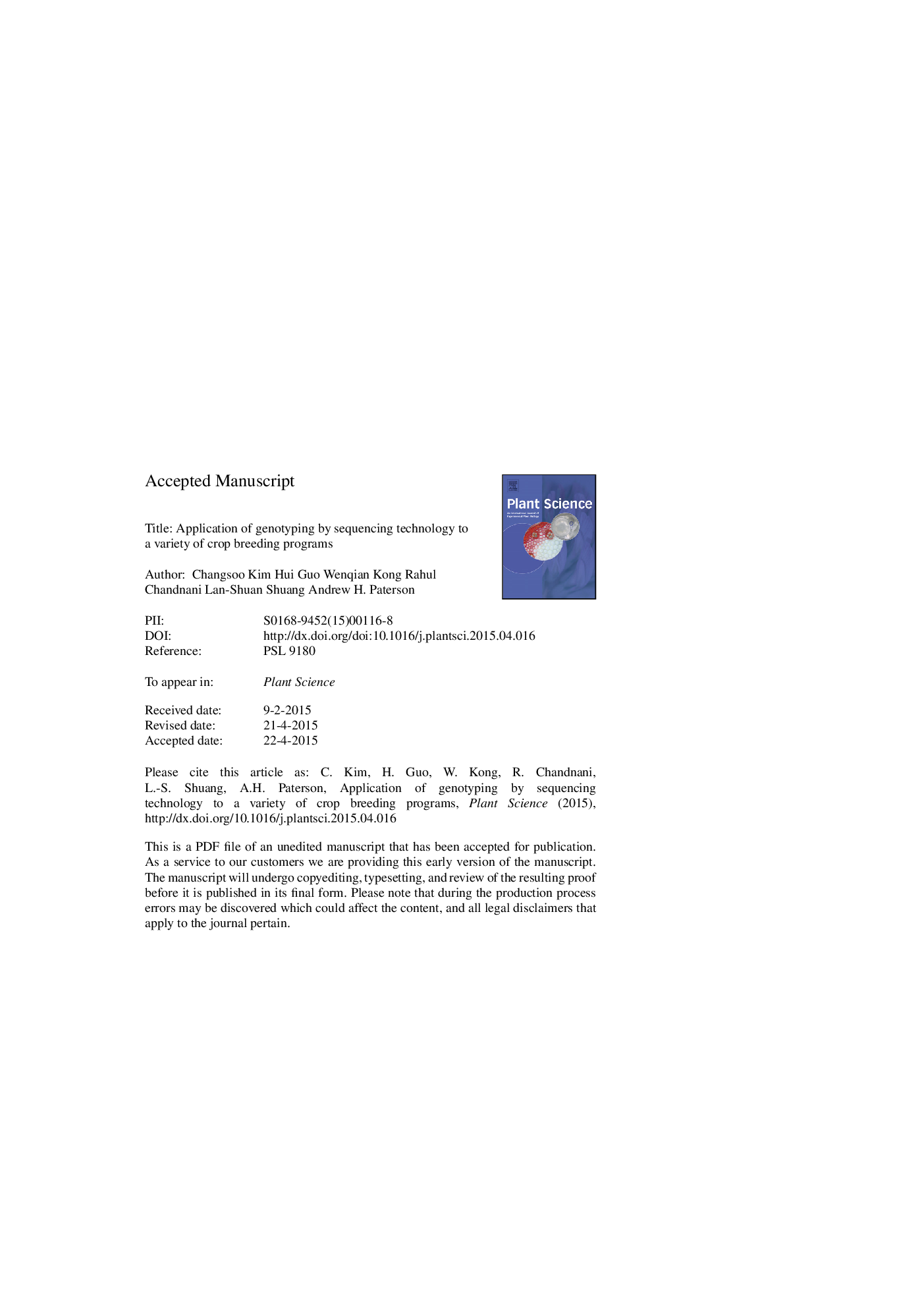| Article ID | Journal | Published Year | Pages | File Type |
|---|---|---|---|---|
| 8357250 | Plant Science | 2016 | 33 Pages |
Abstract
Since the Arabidopsis genome was completed, draft sequences or pseudomolecules have been published for more than 100 plant genomes including green algae, in large part due to advances in sequencing technologies. Advanced DNA sequencing technologies have also conferred new opportunities for high-throughput low-cost crop genotyping, based on single-nucleotide polymorphisms (SNPs). However, a recurring complication in crop genotyping that differs from other taxa is a higher level of DNA sequence duplication, noting that all angiosperms are thought to have polyploidy in their evolutionary history. In the current article, we briefly review current genotyping methods using next-generation sequencing (NGS) technologies. We also explore case studies of genotyping-by-sequencing (GBS) applications to several crops differing in genome size, organization and breeding system (paleopolyploids, neo-allopolyploids, neo-autopolyploids). GBS typically shows good results when it is applied to an inbred diploid species with a well-established reference genome. However, we have also made some progress toward GBS of outcrossing species lacking reference genomes and of polyploid populations, which still need much improvement. Regardless of some limitations, low-cost and multiplexed genotyping offered by GBS will be beneficial to breed superior cultivars in many crop species.
Related Topics
Life Sciences
Agricultural and Biological Sciences
Plant Science
Authors
Changsoo Kim, Hui Guo, Wenqian Kong, Rahul Chandnani, Lan-Shuan Shuang, Andrew H. Paterson,
